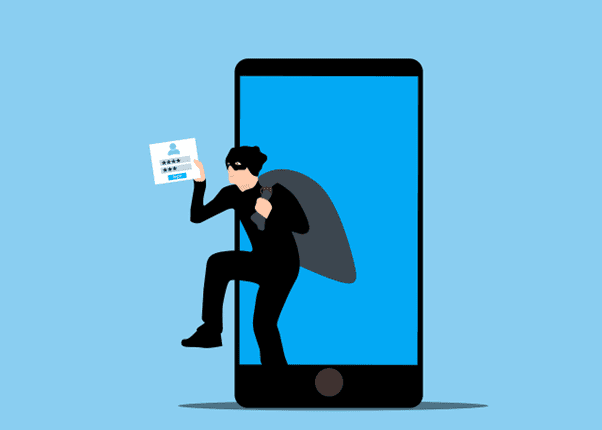Mobile Malware and How to Dodge the Traps!
Your smartphone isn’t just a nifty gadget; it’s your personal assistant, wallet, and communication hub all rolled into one sleek device. But did you know it’s also a prime target for cybercriminals? Yes, folks, while you’ve been busy WhatsApping and Instagramming, hackers have had their eyes on your precious mobile treasure trove. Let’s delve into the sinister world of mobile malware and learn how to keep these digital nasties at bay.
What on Earth is Mobile Malware?
Think of mobile malware as the digital equivalent of pickpockets at a crowded concert. It’s malicious software designed to harm your device or steal your data, arriving in various forms from sneaky apps to deceptive links. The UK has not remained immune to mobile malware attacks. In fact, according to a 2023 report by the National Cyber Security Centre (NCSC), attacks on mobile devices in the UK increased by a staggering 50% over the previous year. Scary, right? Understanding these common traps is your first line of defense.
Common Mobile Malware Traps
Let’s lift the lid on these mobile mischief-makers:
- Phishing Attacks: The most common trap. You’ll receive a text or email that looks legit, often mimicking trusted brands. Click the link or download the attachment, and boom! You’ve got malware.
- Malicious Apps: Not all apps are your friends. Some come with hidden malware that can steal data, display ads, or even control your device. Always do a bit of homework before hitting that download button.
- SMS Scams (Smishing): Smishing uses text messages to trick you into clicking malicious links or sharing personal information. Be cautious of unexpected messages, especially those asking for sensitive info.
- Wi-Fi Risks: Public Wi-Fi networks might as well be labelled “open season” for hackers. Avoid accessing sensitive information when connected to public Wi-Fi unless you enjoy living dangerously.
- Fake Apps: These imposters mimic popular apps but are actually malware in disguise. They can steal your login credentials and financial information or even take control of your device. Verify app authenticity before installing.
- Adware: While not as harmful, adware can be downright annoying and potentially expose you to other threats. It often comes bundled with other apps, so watch out!
Protecting Yourself: Essential Tips
Now that we’ve identified the culprits, let’s arm you with some defenses:
- Stay Updated: Keep your phone’s operating system and apps updated. Turn on auto-update to stay ahead of the game.
- Be Wary of Links and Attachments: Avoid clicking on links or downloading attachments from unknown senders. Better safe than sorry!
- Strong Passwords: Create complex passwords for your phone and all your apps. Consider using a password manager to keep track of them.
- App Store Safety: Only download apps from official app stores like Google Play or the Apple App Store. Read reviews and check permissions before installing.
- Beware of Public Wi-Fi: Use a VPN when connecting to public Wi-Fi to encrypt your data and keep hackers at bay.
- Regular Backups: Back up your phone regularly to protect your data from loss or corruption.
- Security Software: Consider using a reputable mobile security app for added protection.
Extra Steps to Safeguard Your Smartphone
If you’re feeling extra cautious, here are a few more layers of protection:
Physical Security Matters
- Lock It Up: Always set a strong passcode, fingerprint, or facial recognition lock. Avoid simple patterns that can be easily guessed.
- Beware of Public Charging: Avoid using public USB charging stations. These can be compromised, allowing hackers to access your device.
- Lost or Stolen Phone: If your phone is lost or stolen, remotely wipe its data to protect your sensitive information.
App Permissions: A Closer Look
- Limit App Permissions: When installing apps, carefully review the requested permissions. Deny unnecessary permissions to safeguard your privacy and data. For instance, a flashlight app doesn’t need access to your contacts.
- Regular App Audits: Periodically review the apps on your phone. Uninstall apps you no longer use to reduce potential vulnerabilities.
Backup Your Data
- Cloud Backups: Use cloud storage services to back up your data regularly. This ensures you have a copy of your important files even if your phone is lost, stolen, or damaged.
- Local Backups: Consider backing up your phone to your computer. This is another added layer of protection.
Empower Yourself: Take Control of Your Digital Life
By following these tips, you can significantly enhance your smartphone’s security. Prevention is always better than cure, so stay vigilant, informed, and proactive in protecting your digital life. Your smartphone is a powerful tool, but it’s also a potential target for cybercriminals. By understanding the threats and taking proactive steps, you can prevent catastrophe. Enjoy the benefits of mobile technology without compromising your (or your company’s) security!
Contact Us to Fortify Mobile Security at Home and Office
A majority of employees use personal devices for work. This means mobile malware can impact more than one individual; it can also lead to a data breach of an entire company network. Be proactive and put mobile security in place now. Our team of experts can help with reliable solutions to secure all your devices.
Contact us today to schedule a chat about mobile device protection.
facebooktwitteryoutubelinkedin

